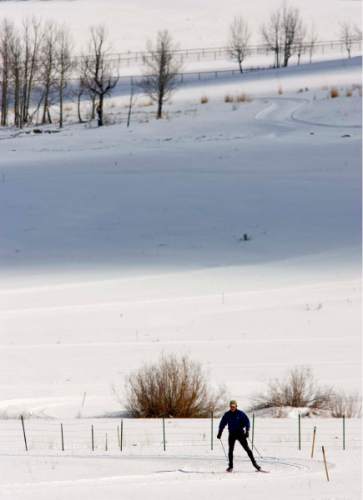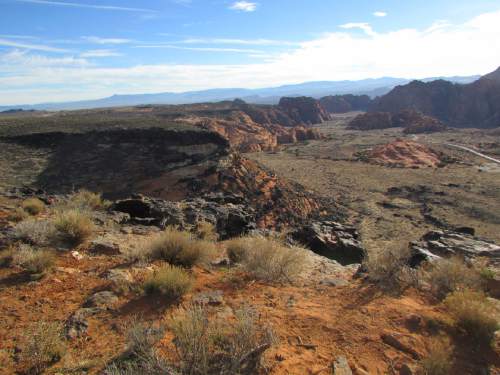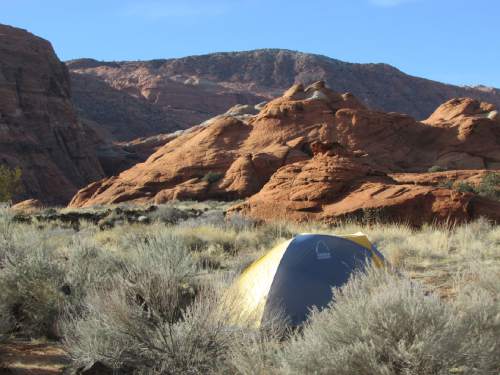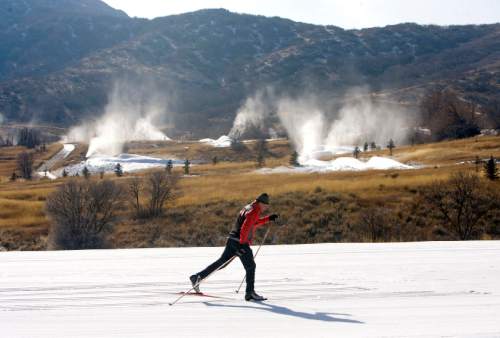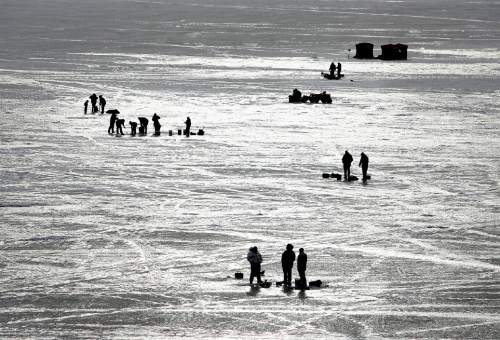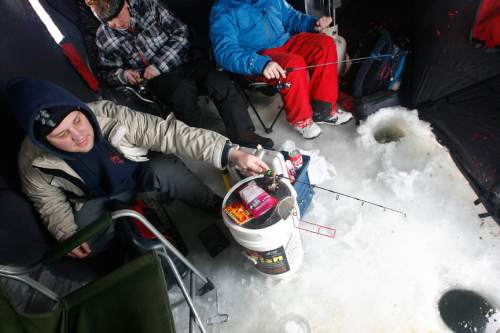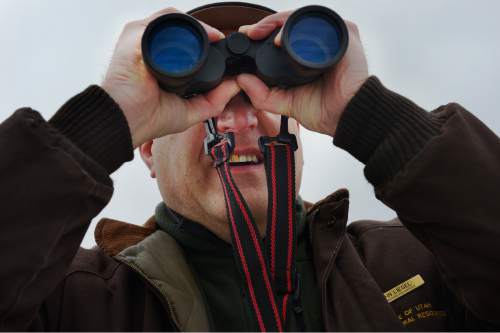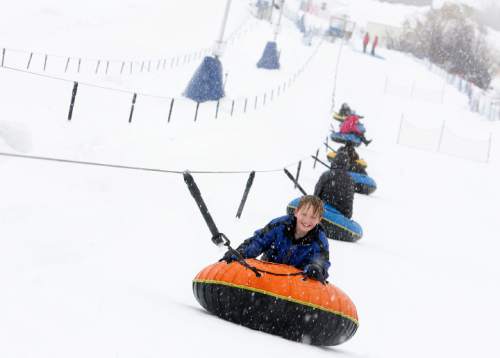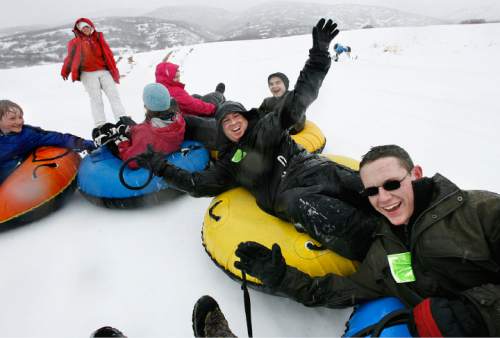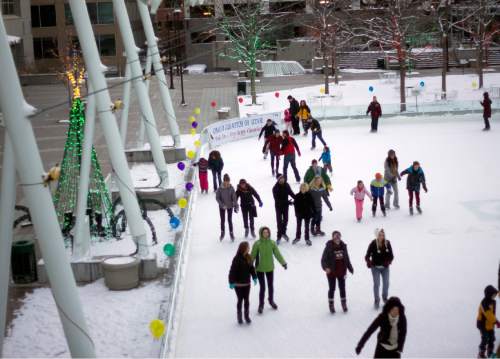This is an archived article that was published on sltrib.com in 2016, and information in the article may be outdated. It is provided only for personal research purposes and may not be reprinted.
Mid-February is the time of year when the winter doldrums cause many Utahns to suffer from severe cases of cabin fever.
The cure for that "disease" can often be easy to find. It just involves putting on some warm clothing and heading outdoors for a few hours or a few days.
There are advantages to enjoying the outdoors in late February and early March.
Crowds are generally lighter. The light looks different in the winter, casting a beautiful glow. And views of mountains, basin and range covered with a fresh coating of snow can be sights to behold.
Here are 10 ideas for places to enjoy the outdoors in late winter in Utah:
Visit a Great Salt Lake bird refuge • A surprising number of birds use the open waters near bird refuges such as Farmington Bay, Bear River and the Great Salt Lake Shorelands Preserve. These include wintering bald eagles. It is possible to drive the roads at Farmington or the auto route at Bear River. All have interesting visitor centers and interpretive signs, as well as hiking trails. There is a beautiful observation tower at the Great Salt Lake Shorelands Preserve. Visiting the facilities is free and most are open from sunrise to sunset. Take a mountain bike ride along dikes or enjoy some photography.
Go tubing on a lift-served hill • Zooming downed a groomed snow course under the lights or during the day is becoming an increasingly common activity. Some Utah spots include Soldier Hollow near Midway, Gorgoza in Parleys Canyon, Snowbasin, the Utah Olympic Park in Park City (which offers what it calls extreme tubing on the weekends), and the new Cherry Peak resort in Cache County.
Outdoor ice skating • Nothing says winter quite like gliding across the ice under the stars. While there are an increasing number of indoor ice facilities in the state, there are fewer outdoor rinks. Perhaps the most iconic is the Gallivan Center rink in the heart of downtown Salt Lake City. South Jordan has an outdoor rink at its reflection pond, the base facilities at Park City provide visitors a small rink, and there is a beautiful facility in Midway next to city hall.
Snowmobiling • The Utah Division of Parks and Recreation grooms snowmobile trails from the Utah-Idaho border south to the Brian Head area northeast of Cedar City. A number of private outfitters throughout the state also offer guided tours and rentals. One of the best resources for all things snowmobiling is the Utah Snowmobiling Association website at http://www.snowut.com. The site includes grooming reports, avalanche information, a list of trails, events and a place to get up-to-date weather reports.
Visit Moab • Moab remains one of Utah's most popular destinations, and from about the middle of March until late October, places such as Canyonlands and Arches National Parks, Dead Horse Point, the Slickrock Bike Trail and the many Bureau of Land Management recreation facilities can be crowded. Things are a little more quiet and less expensive in February. Weather can be surprisingly warm, and if it isn't, hiking in warm clothing can still be more comfortable than a July walk to the Delicate Arch. For information, log on to http://www.moab-utah.com.
Camp in Southwestern Utah • The idea of camping in February might be frightening to some due to the cold, but temperatures in southwestern Utah can be relatively mild. State parks such as Snow Canyon, Sand Hollow and Quail Creek, Zion National Park and the Bureau of Land Management's Dixie Red Cliffs campground are all excellent possibilities. Sitting around a warm campfire on a starlit February evening can be enjoyable and, if the weather gets too bad, visitors are close to tourist facilities in St. George.
Spend a day — and perhaps night — at Antelope Island • Winter is perhaps the best time of year to enjoy Antelope Island State Park. Hiking/bicycling temperatures can be perfect, wildlife such as bison, deer and antelope are active, and there are no bugs. Though it can be cold, those who prepare can enjoy views and relative solitude. Winter camping is surprisingly popular for those who go prepared. Kids enjoy the living history exhibits at Fielding Garr Ranch and the visitor center offers information and souvenirs.
Cross-country skiing • Though one doesn't need a formal trail to enjoy this sport in February, there are groomed facilities available throughout the state for those who do enjoy track skiing. Wasatch County is at the center for groomed trails with the Soldier Hollow Olympic complex, Wasatch Mountain State Park and the Homestead Resort all offering groomed trails. Mill Creek Canyon, though not groomed, is popular with nordic skiers. So is the U.S. Forest Service's Beaver Creek trial near Kamas. Park City's White Pine, Solitude, Sundance, Mountain Dell, Ruby's Inn and Brian Head all provide groomed trails as well.
Ice fishing • Though anglers must be careful as winter transitions into spring, there are numerous opportunities to ice fish at mountain lakes and reservoirs throughout the state. Places such as Fish Lake and Strawberry can provide excellent angling through the ice. The best place to get current fishing reports as well as ice conditions is the Division of Wildlife Resources' fishing report site at http://wildlife.utah.gov/hotspots/.
Hot springs soak • Though some iconic Utah hot springs resorts have closed, a few remain. And the combination of cold weather outside combined with soaking in a hot pool of water can be invigorating. Developed resorts include Crystal Hot Springs north of Brigham City in Honeyville, the Homestead crater in Midway and Mystic Hot Springs near Monroe in Sevier County. Diamond Fork near Spanish Fork Canyon offers a wilder experience after a hike on U.S. Forest Service property.
Twitter: @tribtomwharton


